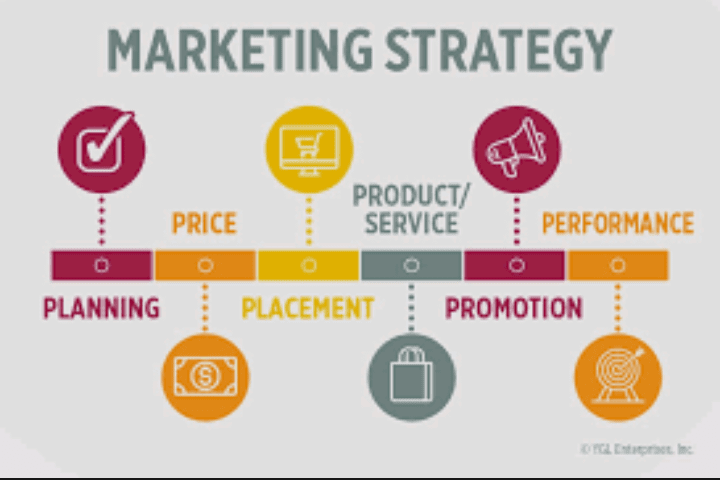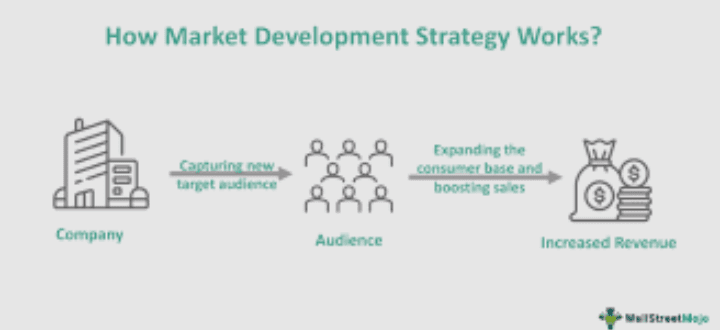Market development is a strategy that businesses use to expand their customer base and increase their sales. It involves identifying new target markets and developing a plan to reach those markets. This strategy can help businesses increase revenue, boost profits, and create new opportunities for growth.
Market development involves finding new customers who are interested in a product or service that a business already offers. This can be done by identifying new geographic regions or demographics to target, or by finding new applications for an existing product or service.
The first step in market development is to conduct research to identify potential new markets. This can include analyzing market trends, studying customer demographics and behavior, and assessing the competition.
Once potential new markets have been identified, the next step is to develop a plan to reach these markets.
One common approach to market development is to create a marketing campaign that is specifically targeted at the new market.
This can involve creating new advertising and promotional materials, using different channels to reach the new market, and offering incentives or discounts to entice new customers to try the product or service.
Another approach to market development is to adapt the product or service to better meet the needs and preferences of the new market. This can involve making changes to the product or service, such as adjusting the packaging, changing the pricing strategy, or adding new features or benefits that are particularly appealing to the new market.
Market development can be a particularly effective strategy for businesses that are operating in mature or saturated markets. By identifying new markets and developing a plan to reach them, businesses can continue to grow and expand even when their existing customer base has reached its limit.
However, market development is not without its challenges. It can be expensive to create new marketing campaigns and develop new products or services. Additionally, businesses may need to invest in new infrastructure or partnerships to reach the new market, which can also be costly.
Despite these challenges, market development can be a powerful strategy for businesses that are looking to grow and expand their customer base. By identifying new markets and developing a plan to reach them, businesses can create new opportunities for growth and increase their revenue and profitability.
Read Also: Building a Strong Brand: Strategies and Tactics for Successful Brand Marketing
Market Expansion Strategies

Market expansion is a term used to describe the growth of a business by reaching out to new markets or by offering new products or services.
Companies that are looking to grow and increase their revenue need to constantly look for new opportunities to expand their reach and tap into new customer bases.
There are several ways in which businesses can expand their markets. One of the most common ways is through geographic expansion. This involves expanding into new geographic locations, such as new cities, states, or countries.
This can be achieved through opening new stores or branches, partnering with local distributors or retailers, or by entering into joint ventures with local businesses.
Another way to expand a market is by offering new products or services. This can be achieved by diversifying the existing product line, adding new features to the existing products, or launching completely new products.
This can help businesses to cater to the changing needs and preferences of their customers, and also help to stay ahead of the competition.
Businesses can also look to expand their market by targeting new customer segments. This involves identifying new groups of customers who may have different needs or preferences, and tailoring products or services to meet their requirements.
For example, a business that primarily targets young adults can expand its market by targeting older customers or families.
The benefits of market expansion are numerous. By expanding into new markets, businesses can increase their revenue, boost their brand awareness, and gain access to new resources and talent.
It can also help to diversify a business’s revenue streams, reducing the risk of relying too heavily on one market or product.
However, market expansion also comes with its own set of challenges. Businesses need to carefully research and analyze new markets to ensure that there is demand for their products or services, and that they can compete effectively with existing players.
They also need to consider the regulatory and legal requirements of the new market, and adapt their marketing and advertising strategies to suit the local culture and customs.
Market expansion is an important strategy for businesses that are looking to grow and increase their revenue. By expanding into new markets or offering new products and services, businesses can tap into new customer bases and increase their brand awareness.
However, it is important to carefully research and analyze new markets, and to adapt to the local culture and customs to ensure success.
Product Expansion Strategies.
Product expansion refers to the process of introducing new products or services into an existing product line or company portfolio.
This is done with the aim of generating additional revenue streams, increasing market share, and attracting new customers. Successful product expansion can also enhance a company’s brand image, increase its competitive advantage, and enable it to stay relevant in an ever-evolving marketplace.
There are several strategies that companies can use to expand their product offerings. One of the most common methods is through the development of new products that complement or enhance existing products.
For example, a company that produces personal computers may introduce a line of computer peripherals such as keyboards, mice, and speakers. This allows the company to tap into new markets and target customers who may not have been interested in its primary products.
Another approach to product expansion is through diversification. This involves entering into new markets or industries that are not related to the company’s core products. For example, a company that produces automobiles may diversify into the production of motorcycles or boats.
This can be a risky strategy, as it requires significant investment and expertise in new areas, but it can also lead to increased revenue and a stronger competitive position in the long run.
Companies can also expand their product offerings by acquiring other companies or licensing technologies from third-party providers.
This approach allows them to quickly gain access to new products and markets without the need for extensive research and development or the creation of new business units. For example, a pharmaceutical company may acquire a smaller biotech firm to gain access to its pipeline of experimental drugs.
Regardless of the approach used, successful product expansion requires careful planning, market research, and an understanding of customer needs and preferences.
It is also important to consider factors such as production costs, pricing, and distribution channels, as well as the potential impact on existing products and brand reputation.
Product expansion is a critical strategy for companies looking to grow and remain competitive in today’s dynamic marketplace. It allows businesses to reach new customers, create new revenue streams, and build brand equity.
However, it is important to approach product expansion with caution and to carefully consider all factors to ensure that new products and services are well-received by customers and contribute to the overall success of the business.
Read Also: The Power of Inbound Marketing: How to Attract, Engage, and Delight Your Target Audience
Market Penetration Strategies
Market penetration is a strategy that businesses use to increase their market share in a particular industry or market. This strategy involves increasing the usage of a product or service among existing customers and attracting new customers through various marketing and sales tactics.
The ultimate goal is to gain a competitive advantage over other players in the market and ultimately, increase profits.
Market penetration is especially important for businesses that operate in highly competitive markets. By penetrating the market, they can establish their presence and secure a larger share of the customer base.
This can be achieved through a variety of tactics such as price reductions, aggressive marketing campaigns, product improvements, and increased distribution.
One of the most common ways to penetrate the market is through pricing. Businesses can lower the price of their product or service, making it more attractive to potential customers.
This can be especially effective if the business is able to maintain the quality of their product or service while reducing costs. This will allow them to attract price-sensitive customers who may have previously been purchasing from a competitor.
Another way to penetrate the market is through advertising and marketing. By increasing advertising and marketing efforts, businesses can raise awareness of their brand and products, ultimately attracting new customers.
This can be done through traditional advertising methods such as print, television, and radio, or through digital marketing techniques such as social media and search engine optimization.
Product improvements can also be used to penetrate the market. By introducing new features, improving quality, or creating a new product altogether, businesses can attract new customers who may have previously purchased from a competitor.
This can be especially effective if the improvements are significant enough to differentiate the product from the competition.
Increasing distribution can also help businesses penetrate the market. By making their product more widely available through various channels, businesses can reach more potential customers.
This can be done through partnerships with other businesses, expanding into new geographic areas, or creating online sales channels.
While market penetration can be an effective strategy for businesses, it is not without risks. Lowering prices to attract customers can result in lower profit margins, and aggressive marketing campaigns can be expensive.
Additionally, if a business is not able to maintain the quality of their product or service while reducing costs, it may result in a loss of customer trust and a damaged brand reputation.
In conclusion, market penetration is a strategy that businesses use to increase their market share by attracting new customers and increasing usage among existing customers.
It can be achieved through a variety of tactics such as price reductions, aggressive marketing campaigns, product improvements, and increased distribution. While it can be an effective strategy, it is important for businesses to weigh the risks and benefits before implementing a market penetration strategy.
Read Also: All You Need to Know About the Wild Republic Stuffed Animals
